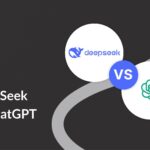Red Hat AI strategy in focus at Red Hat Summit
# Unveiling Red Hat’s AI Strategy: A Collaborative Approach to Enterprise AI
In today’s rapidly evolving tech landscape, enterprises are grappling with the increasing complexity of hybrid cloud environments. Amid this backdrop, Red Hat has emerged as a leader, championing the integration of open-source solutions to make artificial intelligence (AI) more accessible and operationally feasible. The Red Hat Summit 2025 solidified this direction, showcasing a strategy that combines automation, virtualization, and open-source tools like Ansible and OpenShift to streamline enterprise AI operations.
## The Red Hat Conviction: Open-Source as the Key to AI Advancements
At the core of Red Hat’s strategic outlook is a commitment to open-source development, which is viewed not merely as a technological option but as a catalyst for innovation and collaboration. Red Hat has consistently championed enterprise-ready platforms designed to simplify hybrid cloud operations without overpromising on flashy capabilities.
Rob Strechay, managing director of theCUBE Research, succinctly captured this ethos during the Red Hat Summit, noting, “One of the things I loved about Red Hat and the talk about OpenShift Virtualization was that it wasn’t just simplistic virtual machines that were moving over. It was really complex systems of VM.”
This focus on complexity and capability over simplicity and form has differentiated Red Hat’s offerings in the crowded AI market.
## Bridging the Gap Between Lab and Production
Deploying AI solutions at scale requires overcoming numerous hurdles, from data accessibility to system compatibility. Red Hat has positioned itself as an enabler in this transition, working alongside chipmakers like Intel and AMD to optimize AI and memory technologies. Stephen Watt, vice president and distinguished engineer at Red Hat, articulated this during the summit, explaining, “Last year, we announced the InstructLab, which was democratizing fine-tuning models. With our Neural Magic acquisition, we’ve got a lot more into inference, and that’s about serving models and creating value for applications in the enterprise.”
Watt’s perspective underscores a significant shift towards making AI solutions more practical and scalable across a variety of enterprise settings, bridging the often formidable gap between experimental AI and real-world applications.
## Learning from Red Hat: A Template for the Future
Red Hat’s AI strategy serves as a masterclass in the application of open-source methodologies to modern challenges. For companies grappling with AI adoption, there are several valuable lessons to glean:
– **Infrastructure Flexibility**: By partnering with companies like Intel and AMD, Red Hat emphasizes the need for adaptable infrastructures that cater to diverse operational requirements, whether on-premise, in the cloud, or at the edge.
– **Collaborative Ecosystem**: Red Hat’s partnerships extend beyond technology, as they seek to cultivate a rich ecosystem where partners can test and validate applications on OpenShift AI independently. This collaborative approach ensures a steady influx of refined applications ready for enterprise use.
– **Responsible Deployment**: With a keen eye on sustainability and ethical data practices, Red Hat is pushing for AI deployments that are not just powerful but responsible, especially in emerging markets like Latin America. According to Maria Bracho, CTO for Latin America at Red Hat, “It provides a moment for [Latin America] to leapfrog … to apply all these new technologies that we’re shipping into results that are practical for people and change lives.”
## Red Hat’s Emotional Closer: A Vision for Tomorrow
Red Hat’s vision extends beyond business solutions; it is a call to action for the tech industry. The ambition of transforming AI from a niche innovation into a ubiquitous, seamless part of enterprise solutions depends heavily on collaboration and shared growth.
As AI use cases grow in complexity, Red Hat is doubling down on strengthening its partner ecosystem, providing tools and frameworks to enable scalable and robust deployments. The question remains: how can businesses prepare today to take full advantage of the AI-driven cloud environments of tomorrow? Red Hat offers one potential path, marked by open-source collaboration, strategic partnerships, and a bold yet pragmatic approach to innovation.
As enterprises around the globe navigate their AI journeys, the insights shared during the Red Hat Summit provide a compelling roadmap for leveraging AI technology to drive business outcomes. Will your organization embrace the open-source revolution and position itself at the forefront of AI advancements?

